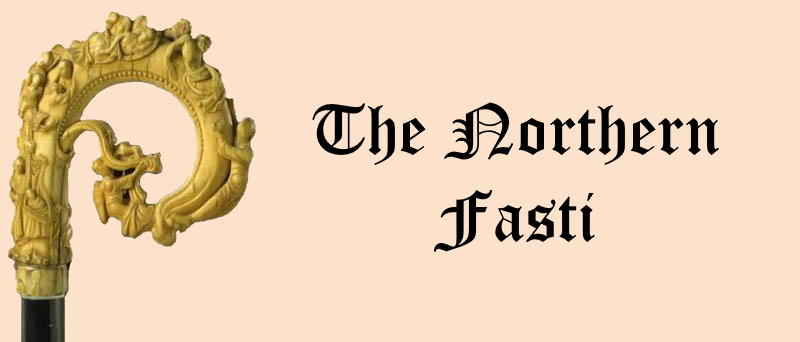Strathspey Deanery
Inverallan
Parish Church: OS Ref: NGR NJ 027260 H.E.S. No: NJ02NW 4 Dedication: St. Futach.
Associated Chapels: Finlarig (Muckrach)
Auchnahannet
As a consequence of its antiquity and the fact that even present-day scholars seem not to have exercised the skill of accurate spelling, the name of the township and parish has, over time, seen a number of permutations and combinations! In the records of the local laird, the Chief of Grant, we find the following variations - Innerairin, Inuerallem, Inuerellam, Inveralyane, Inverariane, and Inverellain, - and we might be corect in supposing that others existed.
The buried walls and foundations of this church were found at the start of the winter of 1888 when a graveyard then in use was being extended. The remains were of a building some 80ft. long and 21ft. wide and it was found to have been divided into two portions of unequal length by a cross-wall of less substantial proportions. In 1926 there was a granite boulder with a basin cut into it, which stood at the graveyard entrance. There was also a much-weathered 7th-century Pictish symbol stone, made of blue slate, which was built into the surrounding graveyard wall (but which may now have been removed). In addition, there is also a free-standing Early Christian stone, which has a latin cross incised on each face. It has been known variously as the Inverallan Cross, the Priest's Stone, and Futach's Stone, commemorating St. Fiacre (or Futach), a 7th-century Irish saint. A holy well called St Futach's Well stood west of the road along the Spey, a short distance from the graveyard.
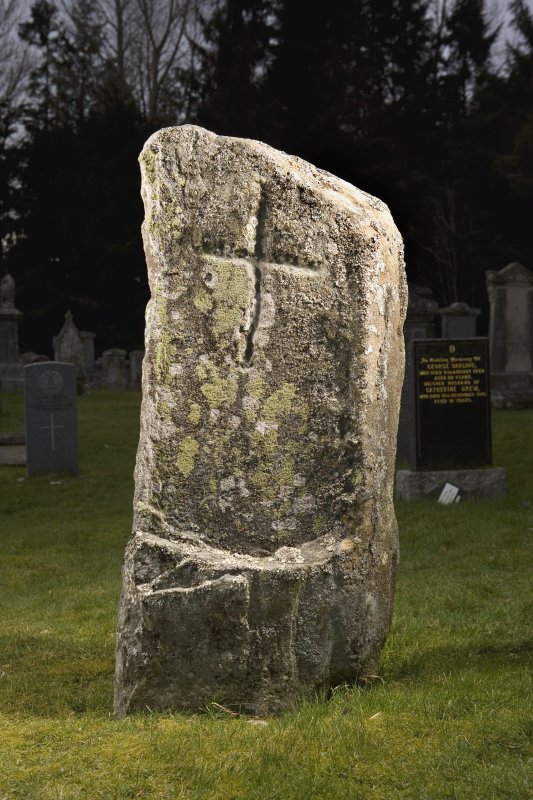
© Àrainneachd Eachdraidheil Alba.
The first written record of this church is found in 1230AD but the presence of the cross-incised stone would suggest that there has been a Christian settlement here from much more ancient times. The name Innerallian (or Inverallan) derives from the fact that the burn which flows into the River Spey beside this old church, was anciently known as the Allan. It rises at Tobair-Alline (Tobar Alain) {
"… the Church of Inveral[l]an standeth on the west bank of the river. In the 13th-century, about the year 1230, this Church, and probably [the] lands about it, pertained to Walter de Moravia son of Freskyn de Moravia of Duffus. And, anno 1236, King Alexander II excambed [exchanged] with Andrew, bishop of Moray, the three Davachs of Fynlarg (near the church of Inveralan) for the forest[s] of Cawood and Logynsythenach in Brae Moray."2 Originally, Walter's gift was to be for the upkeep of the cathedral fabric, but, in time, it became one of the mensal churches of the Bishops of Moray.3
In the excambio mentioned above, the bishop gave the king the forests of Logynsythenach which, in later times would become known as Logiefythenach - this is now Edinkillie, but is called Glenernie on older Ordnance Survey maps
The church of Inverallan was united with that of Advie in 1593, and also with Cromdale in 1618. The parish church was moved to the township of Grantown in 1816. A new church building was erected here by Caroline Stuart, Countess of Seafield, in memory of her husband, the 7th Earl and 26th Chief, who died 18 February 1881, and her son, the 8th Earl and 27th Chief who died 31 March 1886.4
The parochial boundaries were altered in the 1890's and the following lands were removed from the now united parish of Cromdale, Inverallan, and Advie, and given to Duthil parish: Achnehanet, Achoir, Balnaan, Balnouchk, Braes of Mucicrath, Broomward, Balvattan, Upper Balnacruie, Clury, Clury mains, Croftdhu, Croftnahaven, Drynach, Dulnan bridge, Easter Curr, Lower Balnacruie, Mains of Findlairg, Mains of Tullochgorm, Milton of Muchrath, Muckerath, Old Sawmill, Skye of Curr, Torispardon and Croft James, Upper Finlarig, Wester Curr, Muckerath House, Lynleich and Torgarve, Dulnain bridge and Broomhill station.4b This had the effect of removing those properties which lay within the county boundary of Inverness, leaving behind those which were within the boundaries of Elgin-shire (Moray).
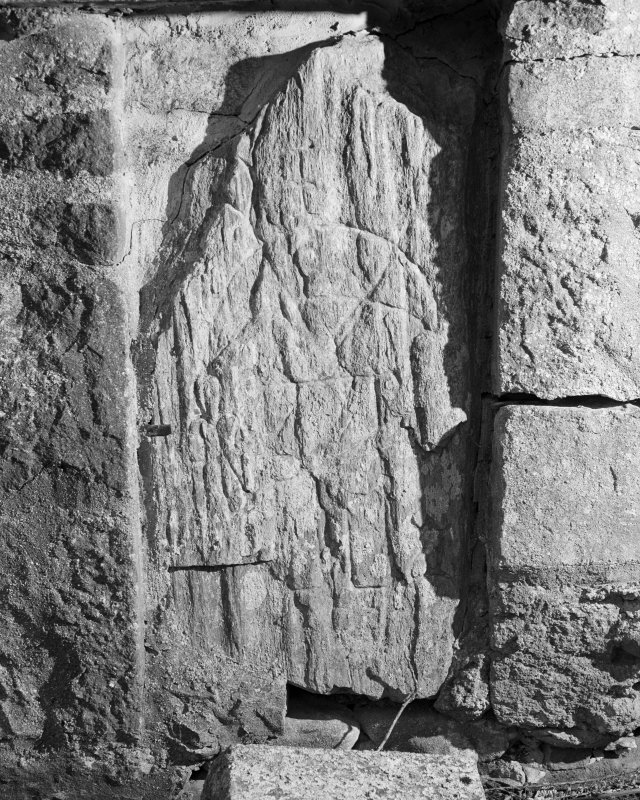

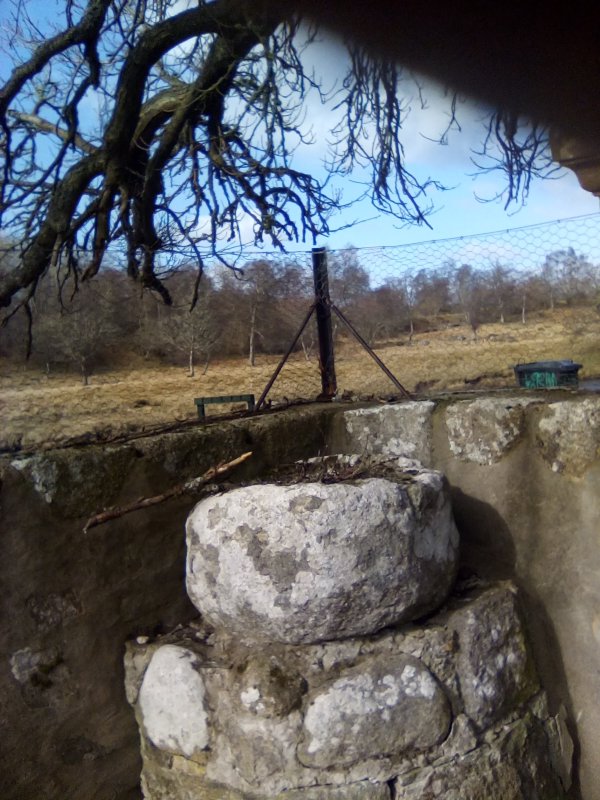
© Àrainneachd Eachdraidheil Alba.
On the south side of the Spey, on the farm of Congash
The Lairds of Grant.
"Although the Grant family have been long connected with Strathspey, it was not the original country of the Grants. Their first known territorial designation was Lords of Stratherrick, from a disrict in the county of Inverness, now part of the Lovat estates. At an early period they also acquired the lands of Inverallan in Strathspey, and about the middle and end of the fifteenth century they added the estates of Freuchie and Glencarnie to their possessions. The title of Grants of Freuchie, with the occasional local designation of Lairds of Grant, continued in the family for ten generations, from 1450 to 1694, when Ludovick Grant, the " Highland King," having obtained a Crown charter erecting his lands into the regality of Grant, dropped the territorial designation of Freuchie, and adopted that of Grant of Grant, by which his descendants continued to be known until they succeeded to the title and dignity of Earl of Seafield."20
The lands of Inverallan were among the earliest possessions of the Grant family, and the first which they acquired in Strathspey. They came into the possession of John le Grant during the reign of King Robert the Bruce and have ever since been inherited by the Grants with only one interruption, caused by the lands having been provided to a co-heiress. A dispute which arose afterwards, respecting the possession of these lands, lasted for upwards of two centuries. It is fully illustrated by documents in the Grant Charter-chest, and the facts are of interest for understanding the history of this early inheritance of the Grants in Strathspey.
As a separate estate, the lands of Inverallan were composed of three dabhaichean. They were situated on the west side of the river Spey, and extended several miles up that river from the vicinity of Castle Grant. In these three dabhaichean are comprised the lands of Kildreke or Dreggie, Glenbeg, Craggan, and Gaich. We record a charter below which states that Andrew, bishop of Moray, received the church lands of Inverallan for the purpose of supporting the fabric of the cathedral at Elgin, showing that in these times (13th-century) the lands of Inverallan were in the hands of the immensely powerful de Moravia family.
| No. | Name | Including | OS Grid Ref. [NGR] | Extent | Notes |
|---|---|---|---|---|---|
| 1. | Killdreke | 1 dabhach | later known as Dreggie | ||
| Auchchosnich | NJ 02406 29428 | ||||
| Gortown | c. NJ 015288 | ||||
| East Dreggie | NJ 02406 29428 | ||||
| Rycorrich | c. NJ 02406 29428 | "With croft of Lyn M'Grigor" | |||
| West Dreggie | |||||
| 2. | Gaigh | 1 dabhach | |||
| Kirktown of Inverallan | NJ 02660 26018 | ||||
| East Crannach | |||||
| Kyllintrae | |||||
| Easter Laggan | NJ 02660 26018 | ||||
| Wester Laggan | NH 99984 25322 | ||||
| 3. | Glenbegg & Craggan | NJ 00739 27981 | 1 dabhach | ||
| Shendale | |||||
| Bellichoule | |||||
| Allendow | |||||
| Reichraggan | |||||
| Tornabirak | |||||
| 4. | Tullochgorm | NH 96926 21333 | |||
| Ochunoir | NH 96305 21903 | ||||
| Broomward [Broompark?] | NH 96401 22147 | ||||
| Balvaddan [Bavattan] | NH96816 22392 | ||||
| Balnacruie | NH 97188 22433 | ||||
| Croftnahawn [Croftnahaven] | NH 98112 22125 | ||||
| 5. | Clune | NH 970234 | 1 dabhach | ||
| Drynach | NH 97433 23262 | ||||
| Croftdow | NH 97607 22949 | ||||
| Croftjames | NH 97607 22949 | ||||
| Dalnaan [Balnaan] | NH 97677 24717 | ||||
| Dalloupack | |||||
| Presintoul | |||||
| Torsparden [Torisparden] | NH 96954 23344 | ||||
| Croftnahawn | |||||
| 6. | Ovir Finlarg | NH 98361 25076 | 1 dabhach | Muckerach [Chiefs of Grant, iii., 290, p. 366] | |
| 7. | Mid Finlarg | NH 99431 25416 | 1 dabhach | ||
| 8. | Nethir Finlarg | 1 dabhach | Bellintomb | ||
| Bellintomb | NJ 00329 24674 | Six parts of Bellintomb | |||
| Riencehera [Easter Rynechkra] | NH 98240 30265 | ||||
| Bellinhuan | |||||
| Laggan [duplicate?] | NJ 00315 25706 | ||||
| 9. | Curr | [Mid Curr] | NH 99673 23793 | 1 dabhach | |
| Glengown [Glengour?] | NH 98338 33470 | ||||
| Tiribeg [Tiribeg Wood] | NH 98050 36162 | ||||
| Corrychirkle [Corrycharcle] | NH 97783 34723 | ||||
| Gayth | half dabhach | ||||
| Drumullie & Toribegg | half dabhach | Half of Tullochgorm | |||
| Wester Curr | half dabhach | Half of Curr | |||
| Glenbeg | half dabhach | ||||
| Information from Ross (2003).90 Locations by David at Cushnie Enterprises. | |||||
1224-42 Sir Walter de Moravia grants the church of Innerallian to the Church of the Holy Trinity of Elgin (Elgin Cathedral). "Walterus de Moravia, miles, omnibus amicis fuis et hominibus falutem • Sciant prefentes et futuri me dediffe • conceffiffe et hac prefenti carta mea confirmaffe Deo et ecclefie Sancte Trinitatis de Elgyn in puram et perpetuam elemofinam • ad fuftentationem fabrice ejufdem ecclefie in perpetuum • ecclefiam de Inueralien cum omnibus juftis pertinentiis fuis • Quare volo et concedo ut capitulum predicte ecclefie de Elgyn teneat et polfideat predictam ecclefiam de Inueralyen ad fabricam dicte ecclefie de Elgyn in perpetuum • adeo libere et quiete • plenarie et honorifice ficut aliqua ecclefia in toto regno Scotie ab aliquo capitulo liberius • quietius • plenius et honorificentius tenetur et poffidetur • Teftibus Andrea epifcopo Moravienfi • Comite de Ros • domino Symone vicario de Dundurkus • domino Radulpho capeflano epifcopi Moravienfis • Alexandro vicecomite de Elgyn • Symone de Hogefton • Henrico templario • et aliis."3
1316 (18 October) William of Federeth, acting as superior, sold the lands of Inverallan to John le Grant.4 This marks the first appearance of the Grant family in Strathspey. John became known as "lord of Stratherick and Inverallan."
1367-1362 Charter by Patrick the Grant, Lord of Stratharthoc [Stratherrick], to his son-in-law William Pilche, burgess of Inverness, of the dabhach of Kildreke [Dreggie] and the half dabhach of Glenbeg within his lands of Inueralyane.5 Failing any heirs, these lands were to return to Patrick and his heirs.
1389 Thomas Earl of Moray is charged with the custody and defence of all of the Bishop of Moray's lands against 'malefactors' and especially the 'Highlanders' (Kethranicos) and others.6
1453 (31 August) Precept of Sasine from Thomas, Earl of Moray, in favour of John le Hay of Mayn, in the half of the townships of Inuerariane, Glenbeg, and Drekky, with their rightful belongings, all in the Earldom of Moray and Regality of Ballokhill. Given at Elgin.7
1541 (7 May) In the Chapter House of Elgin Cathedral, Patrick Hepburn, bishop of Moray and perpetual Commendator of Scone Abbey, gives a chater recording that he had given and let heritably in feu-farm to William Grant, son of John Grant of Freuchy, and William's heirs, his (the bishop's) lands of Vuirfinlarg alias Mukroth, Midfinlarg, and Nedirfinlarg, with their pertinents, in the barony of Strathspey, regality of Spyny, and shire of Elgin and Forres.8
Care is needed here - in certain sources, chapels are grouped under the 'modern' Civil Parish where they are situated rather than, as here, the medieval Ecclesiastical Parish.
WE ARE CURRENTLY WRITING A MORE DETAILED STUDY OF CONGASH AND ITS CHAPEL.
WATCH THIS SPACE! (02/11/2024)
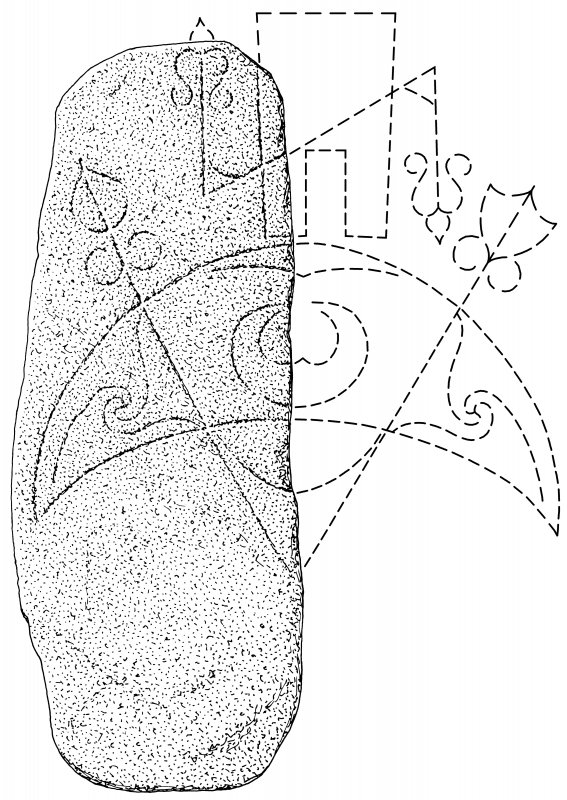
and now in the National Museum in Edinburgh.
© Àrainneachd Eachdraidheil Alba.
1. Fraser, Chiefs of Grant, I, xxxiv. Return to Text
2. Shaw (1882) i, p.228. Return to Text
3. R.E.M. no. 95, p.111. Return to Text
4. Fraser (1883), i., p. 22; iii., pp. 257, 258. Return to Text
4b. Sheenen (1892), 147-148. Return to Text
5. Fraser (1883), iii., no. 15, p.10. Return to Text
6. R.E.M., no. 170, p. 201. Return to Text
7. Fraser (1883), iii., no. 29, p.22. Return to Text
8. Fraser (1883), iii., no. 290, p. 366. Return to Text
20. Fraser (1883), i., p. xxii. Return to Text
90. Ross (2003), ii., p. 139. Return to Text
Anderson, G. and Anderson, P. (1842) Guide to the Highlands and Islands of Scotland Including Orkney and Zetland. Edinburgh. https://archive.org/details/guidetohighlands00andeiala
Barrow, G.S. (1988) 'Badenoch & Strathspey, 1130-1312', in Northern Scotland, Vol. 8.
Bliss, W.H. et al (1896) Calendar of entries in the Papal registers relating to Great Britain and Ireland: Petitions to the Pope, Volume I, A.D. 1342-1419, London: H.M. Stationery Office. [C.P.P., i.] https://archive.org/details/calendarentries00blisgoog
Chalmers, G. (1807) Caledonia or an Account, Historical and Topgraphic, of North Britain; from the most ancient to the present times: with a Dictionary of Places, Edinburgh: A. Constable. https://books.google.co.uk/books?id=_JiPwwEACAAJ&pg=PA115&source=gbs_toc_r&cad=2#v=onepage&q=Cromdale&f=false
Clancy, T.O. (1995) 'Annat in Scotland', Edinburgh: Innes Review, No. 46., Vol. 2., pp. 91-115.
Cramond, Wm. (1897) Guide to Grantown and District, Dundee: John Leng & Co..
Fawcett, R. and Oram, R. (2014) Elgin Cathedral and the Diocese of Moray, Edinburgh, Historic Scotland. Return to Text.
Forsyth, W. (1900) In the Shadow of Cairngorm: Chronicles of the united parishes of Abernethy and Kincardine, Inverness: The Northern Counties Publishing Company, Ltd. https://ia601605.us.archive.org/25/items/inshadowcairngo00forsgoog/inshadowcairngo00forsgoog.pdf
Fraser, Wm. (1883) The Chiefs of Grant, Edinburgh. Published by the Grant family in 3 volumes.
Fraser-Mackintosh of Drummond, C. (1866) Dunachton Past and Present, Inverness: Printed at the Advertiser Office. (Only fourty copies were printed.)https://archive.org/details/dunachtonpastpre1866mack
Innes, C. (1837) Registrum Episcopatus Moraviensis: e pluribus codicibus consarcinatum virca A.D. MCCCC, cum continuatione diplomatum recentiorum usque ad A.D. MDCVVIII, Edinburgh: for the Bannatyne Club. [R.E.M.]
MacDonald, A. (1973) '"Annat" in Scotland: A Provisional Review', Scottish Studies, 17 (1973), pp. 135-146.
Mackinlay, J.M. (1914) Ancient Church Dedications in Scotland: Volume 2, Non-Scriptural Dedications, Edinburgh: David Douglas.
Mitchell, J. & Noble, G. (2017) 'The Monumental Cemeteries of Northern Pictland', Medieval Archaeology, vol. 61:1, p. 1-40. http://dx.doi.org/10.1080/00766097.2017.1296031
Reid, W. (1895) Grantown and the Adjacent Country: A Guide to Strathspey, Grantown: Angus Stuart. (Third Edition, Revised).
Shaw, L., (1882) The History of the Province of Moray, Glasgow: Hamilton, Adams, & Co. New Edition in three volumes.
Shennan, H,. (1892) Boundaries of Counties and Parishes of Scotland, Edinburgh: William Green & Sons. https://scotlandsplaces.gov.uk/dv/pdfs/hay-shennan (Accessed 23/01/2025)
Theses.
Ross, A.D. (2003) The Province of Moray, c.1000-1230, unpublished PhD thesis presented to Aberdeen University, 2 volumes.
e-mail: admin@cushnieent.com
© 2024 Cushnie Enterprises
